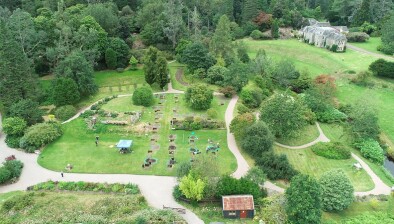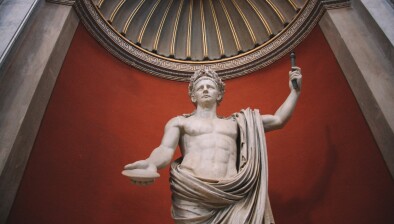And finally… ‘Unusual construction material’ found in Babylon
Vital clues about Babylon’s famed Tower of Babel may have been discovered by archaeologists after bitumen and mortar was found on a brick commissioned by the ancient Babylonian King Nebuchadnezzar II.

The Tower of Babel’s very existence has eluded researchers for years. While many assert that it is merely metaphorical, others claim the tower was a real, serving structure. According to the Bible, in Genesis 11:1-9, the tower was built in the land of Shinar — Babylonia — some time after the great flood.
Increased interest and research has offered up a handful of vital clues and evidence for the tower’s existence, including some “unusual construction material” discovered on a brick believed to have once been part of the tower.
The brick was commissioned by King Nebuchadnezzar II — the man who researchers believe ordered the tower’s construction.
In a bid for world supremacy in 586 BC, he stormed Jerusalem, a city 500 miles to the west, capturing its most highly-skilled and highly-educated citizens.
Their plight — and how their presence in Babylon may hint at the existence of the tower — was recalled during the Smithsonian Channel’s documentary, ‘Secrets Unlocked: Tower of Babel’.
It is believed that, as these people were brought into Babylon ‒ located in modern-day Iraq ‒ they were turned into slaves: forced to work and kept in captivity.
Some experts believe that these captive Jews witnessed the tower being built and were at first mesmerised, but soon looked at the structure as a symbol of their oppression.
Dr Irving Finkel of the British Museum told The Express: “When you look at the early chapters of the Bible, it is clear that some of it is drawn from the Judeans’ own records, and some of it incorporates narratives which they must have encountered for the first time in Babylon, which were so powerful and striking that the authors, the philosophers who worked on the Hebrew texts, incorporated them to tell their own story.”
The documentary’s narrator noted: “There’s a compelling clue in the story that backs up a theory that Jewish slaves witnessed the tower being built during their time in captivity.”
Presenting an original Babylonian brick, found in modern-day Iraq, they continued: “It carries traces of an unusual construction material from the time: bitumen, an ancient tar, and mortar that’s specifically mentioned in the biblical tale.”
Researchers know Nebuchadnezzar commissioned the brick because there’s a stamped inscription of his name on the front.
The edge of the brick is covered with a murky black: this is bitumen.
Dr Finkel said: “In the book of Genesis it literally says that they use brick for stone and bitumen for mortar; it’s expressly said there.
“What we have here is one brick and its bitumen which fits exactly into that special context.
“There can be no doubt that the stimulus for the story and the narrative must have taken shape during the Babylonian exile.”
The evidence could help to prove the existence of the Tower of Babel, its story written by a “desperate population in exile held captive by a ruthless king”.

















